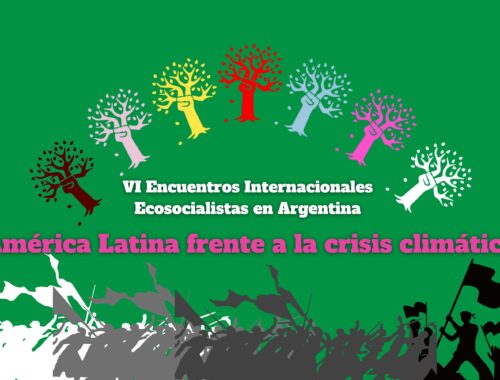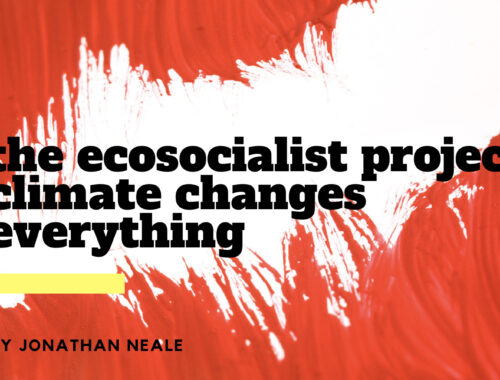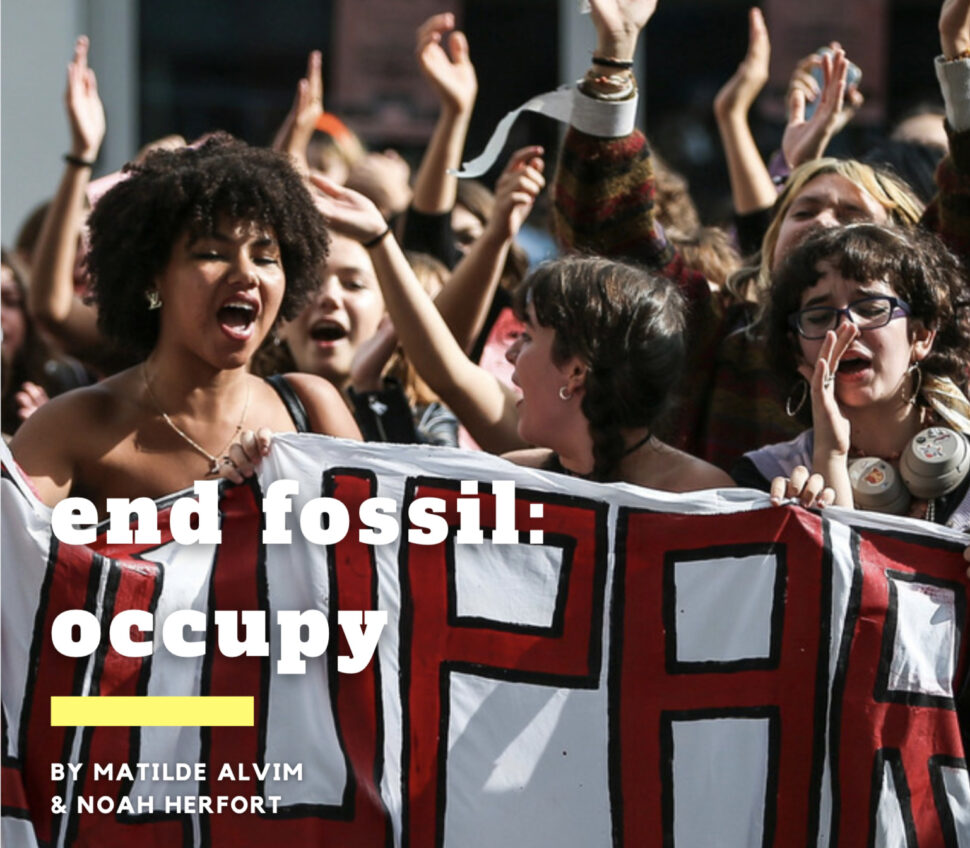
End Fossil: Occupy – taking stock
By: Matilde Alvim and Noah Herfort
[this article was published in December 2022, and since then, a new Spring of Occupations was launched by End Fossil: Occupy, which will begin this May]
“End Fossil: Occupy!” was born out of the premise that as youth, revolution is our task and radicalization our duty. The action callout was launched in March 2022, with the goal of re-igniting the mass youth movement and at the same time to escalate the conflict with an increasingly decrepit institutional status quo.
Let’s start with a recap. On September 14th, Fossil Free Penn kicked off “End Fossil: Occupy!” when they occupied part of their campus in Philadelphia with two climate and social justice demands directed at their university. Their occupation lasted 39 days, culminating in the invasion of the football game between Penn and Yale. On October 24th, students occupied the main hall of Göttingen University (Germany) for a week. On November 2nd, occupations began in Spain, lasting over a week at the University of Barcelona until they won one of their demands. On November 7th, it was time for Portugal, Germany and the UK to occupy. These occupations lasted around one week, with new ones springing up in other cities in Germany and the Czech Republic in the following days. Right now, three occupations are taking place in Austria and more are expected in the Netherlands.
So far, around 25 occupations have taken place under End Fossil. Although occupations continue, in this article we will present our initial takeaways to reflect, draw lessons, and pave the way for a strategising process that will strengthen the movement.
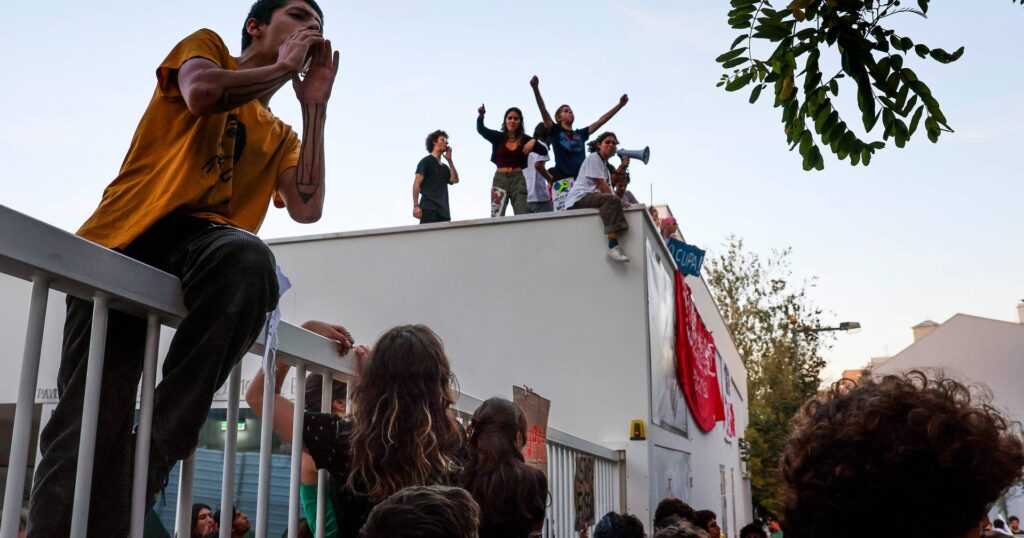
Our main takes: lack of “virality” and not enough disruption
If we had to put the initial evaluation into short words, it’d be lack of virality (quantitative) and not enough disruption (qualitative). This shouldn’t demoralise us as we pave the way for the radicalization of the youth movement. But it’s crucial to analyse what didn’t go as expected.
Why didn’t it go as viral?
The initial logic was to launch a simple, easy to reproduce, yet powerful action that could take place across the world. The goal was to ignite a fire like Fridays for Future had done between the end of 2018 and early 2019, where anyone who went to school or university could actually participate in the action and take ownership in a worldwide movement. However, End Fossil never caught fire like pre-pandemic FFF. We think there may be two primary reasons why.
- Rolling Occupations
End Fossil occupations were spread out over four months. The rolling nature of occupations within a confined multi-month period offered flexibility to occupying groups, all of whom had different schedules flexibility to occupying groups, all of whom had different schedules to navigate. Temporal flexibility ensured that interested groups actually occupied. However, this may have elevated the tactic itself above the importance of international coordination.
For example, if all occupations were coordinated to happen within, for example, a ten day period, then it would have given the image of a mass international action rather than a patchwork of loosely connected actions. Here we can draw on the strike model, which chose a specific day on which millions left school to demand climate justice. This tight international coordination enabled widespread media interest and cultural permeation. Going forwards, a second round of occupations ought to specify a shorter time period in which occupations must take place. This would ensure for movement consolidation, inter-occupation solidarity, and real time strategizing.
Imagine one hundred schools and universities from around the world are occupied at the same time and are in active discussion with one another. One week in and most have had little progress on their demands. Due to coordinated dialogue and shared strategizing, the collective international decision is made to escalate, a tactical shift that is then fine-tuned and executed according to each local context. As a connected international organism, occupations would create a palatable global narrative for the media and wider public.
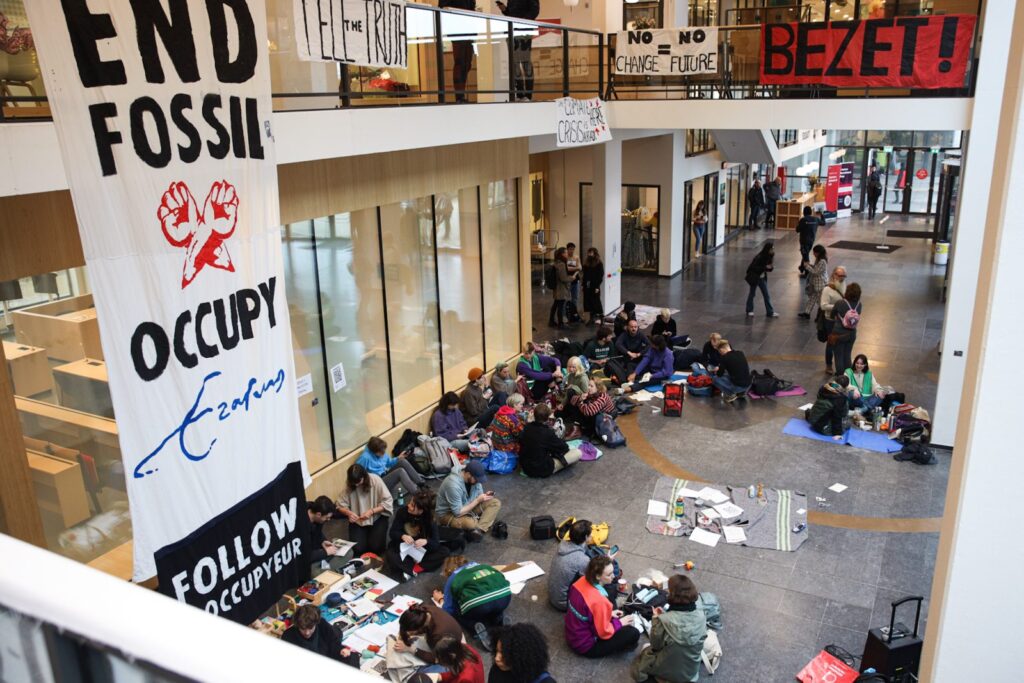
2. Dominance of Local Demands
The second contributing factor to End Fossil not going viral is the predominance of local demands. The End Fossil demand structure suggested that each occupation makes its own demands, which could be at the national, regional, or local level. Most often, occupations in one country shared one national demand plus local demands directed at their university. For example, in the UK, the national demand was to nationalise the fossil fuel industry while local demands focused on cutting all University fossil ties across research, recruitment, and finance.
In theory, demands should be mutually reinforcing so as to advance the actual demand of the campaign: to end the fossil political economy. However, in practice, the national demand, which operated as the glue to bind different occupations in the same country, was at times trumped by local University-specific demands. This exacerbated the movement fragmentation already caused by temporal disunity.
Local demands certainly provided flexibility to occupying groups, who could choose a demand that best suited their context. They are also more “winnable” than a big national demand like ending the fossil economy by 2030. But at this stage of advanced climate breakdown, we can be under no illusions that “winning” is nothing short of a rapid, equitable abolition of fossil production. For the second round of occupations, we must be more strategic with our demand structure. This may include revisiting how local demands can be connected to a national demand, especially in leveraging high schools and universities as powerful cultural institutions with the capacity to directly lobby government, or dropping University and school specific demands altogether.
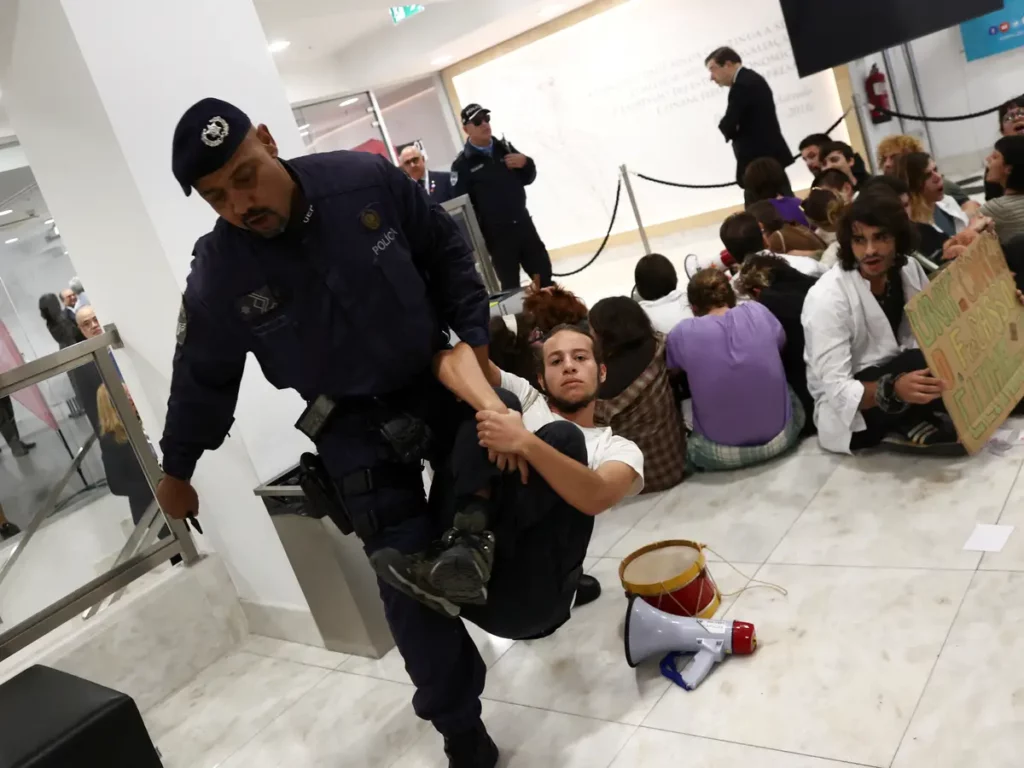
Lack of disruption
Shifting the angle from quantitative to qualitative, our second takeaway is that the existing occupations were not disruptive enough. Or, more specifically, occupations were not ready to shut down schools. The lack of disruption made it less appealing to the media, while at the same time contributing to creating a sense of conformity within ourselves.
Except in the case of some high schools in Portugal and of the invasion of the homecoming Penn vs Yale football game in the U.S., occupations were largely siloed to one lecture theatre or building. Tactical atomisation, rather than interconnected campus-wide disruption, stifled the necessary social chaos to actually bring the normal functioning of the school or university to a halt – the prerequisite for any advances on a national demand. For the second round of occupations, we must create the enabling conditions for greater disruption.
This requires taking the third End Fossil principle of occupying until we win more seriously. A good example was End Fossil Barcelona’s response to the University’s warning to kick them out: a letter explicitly saying they were occupying until they win the demand, and ringing the fire alarms of the building as a way to make a powerful statement. However, this is not enough. We must prepare ourselves to be able to leave negotiation behind and provoke and organise real political turmoil. Another way with which “occupy until we win” can take its real political meaning is by engaging in movement-wide coalition building in each country, creating a big moment of disruption spread across different places of society: schools, public squares, roads, infrastructure, company headquarters, etc..
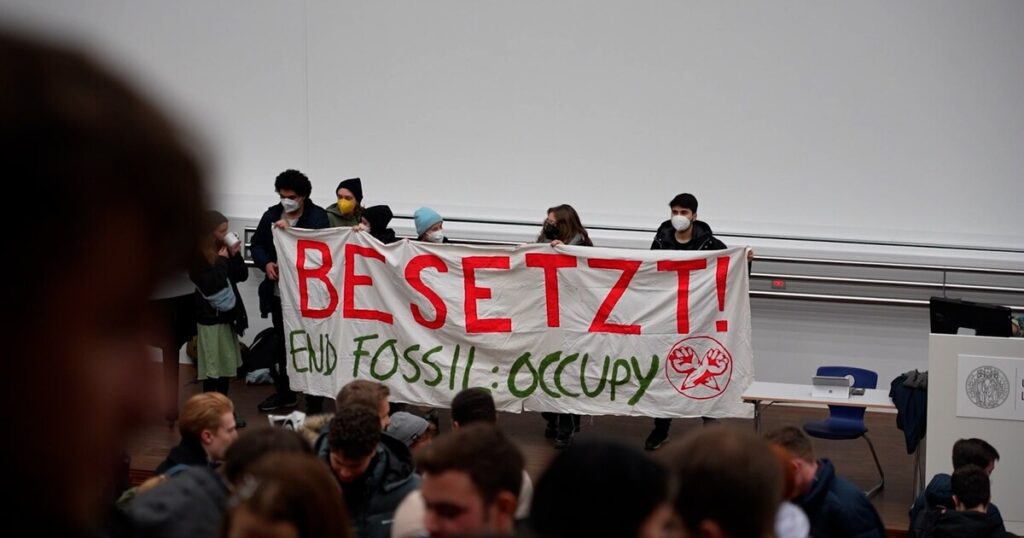
Lessons and next steps
Throughout this article, we have analysed our two main takeaways from this wave of school and university occupations under End Fossil. Although some things didn’t go as expected, there is no reason to be demoralised. We are determined in building the path for a radical climate justice youth movement that can provoke, organise, and lead an ecosocialist revolution that topples the fossil economy.
We are confident that these occupations were just the beginning of a larger trend towards radicalization. In countries like Germany and Portugal, school and university occupations were a somewhat innovative tactic for the climate justice movement. And at international level, this was a first attempt to coordinate occupations under the same broad demand of ending the fossil economy, with the intention of disruption. So, even though we have not achieved all we wanted, we did create international synergy towards a more militant, organised and radical movement.
To use this energy wisely, we must constantly learn and reinvent ourselves. Some countries have already committed to a wave of occupations in the Spring. In order to create a powerful, international mass moment like Occupy Wall Street or the Arab Spring did in the early 2010s, we must sit together face to face and have serious discussion around key questions:
- What does it mean to occupy until we win?
- How can we expand this callout internationally?
- Who are our allies in building strong and radical coalitions to end the fossil economy?
This was just the beginning – or, in other words, the 25 international occupations were just a prototype of what’s to come.
Until victory, everything is a rehearsal.




